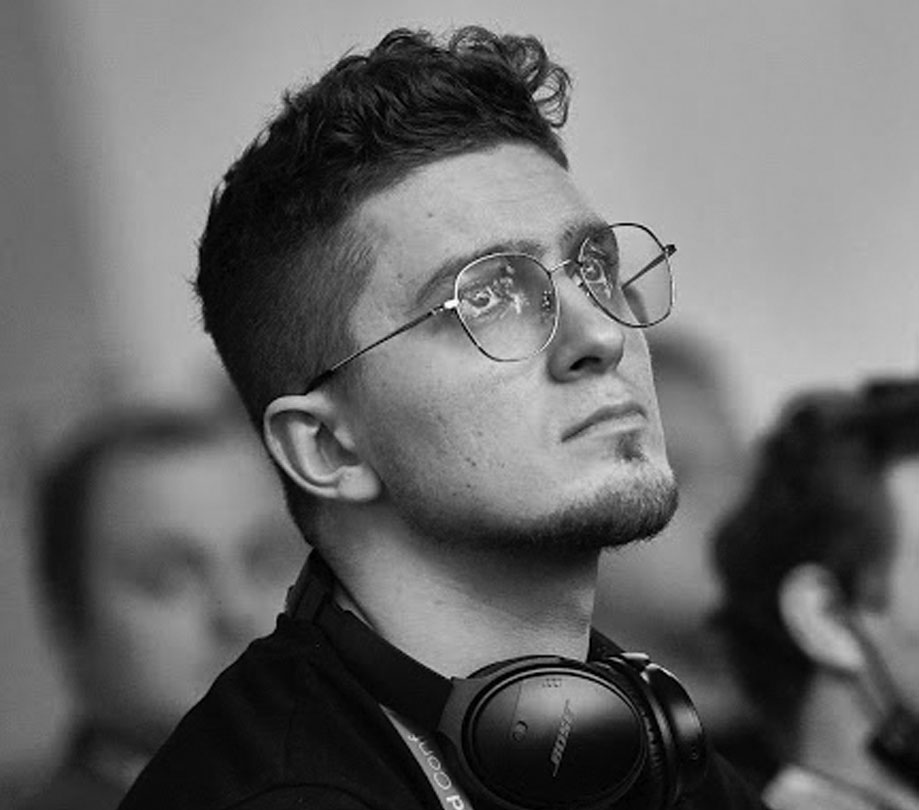From a gender equality perspective, this Olympics is historic.
For the first time ever at a Games, there are an equal number of events for men and women.
Australia is actually sending its highest proportion of women to a Games in history, at 55.6 per cent of athletes.
There is a degree of symmetry in this — albeit a slightly disingenuous one — because women first appeared in competition at the first Olympics Paris hosted in 1900.
Incredibly, it took until 2012 for women to be allowed to compete in all the events on the Olympic program, and never before this year has there been absolute equality until this Paris Games in 2024.
That it has taken 128 years for women to be given an equal footing at the modern Olympics is a frankly staggering anachronism by today’s standards.
That it happened at all is arguably down to one woman — Alice Milliat.
‘The Olympic Games must be reserved for men’
Those second Olympic Games in 1900 were something of a debacle.
Many athletes had no idea they were even competing at an Olympics, with many of the events referred to as International Championships, International Games or even just the Paris Games.
Australian sprinter Stan Rowley wrote that the occasion was treated “by most of the competitors as a huge joke” and that to describe the events as important would be “an insult”.
The events were incorporated into the 1900 Exposition Universelle, whose organiser, Alfred Picard looked down his nose at the athletic events he had been burdened with as part of his eight-month long ode to the peak of the second industrial revolution.
Picard felt the ideals espoused by the father of the modern Olympics, Baron Pierre de Coubertin, were “absurd anachronisms” and had no place at his event.
Baron de Coubertin said afterwards that it was a “miracle” that the Games survived Paris.
That’s not all he said.
It’s safe to say the Baron was not a particular fan of female athleticism, labelling it “the most unaesthetic sight human eyes could contemplate”.
His idealised vision of the Games as one born from the mould of the English Public School of muscular Christianity — his belief being that “The Olympic Games must be reserved for men”.
The first women’s Olympic champions
Despite the opposition, this Olympics did, retrospectively in any case, feature the first female competitors at a Games — 22 of them, out of a total of 997 athletes, in fact, competing in five sports: tennis, sailing, croquet, equestrian and golf.
Mdm Filleul-Brohy and Marie Ohnier hold the honour of being the first competitors, competing in the sadly-departed mixed-gender croquet competition.
Swiss sailor Hélène de Pourtalès was the first woman to win an event as part of the three-person crew of the boat Lérina that won the first race in the 1 to 2 ton class.
It was, in fact, British tennis player Charlotte Cooper, a five-time Wimbledon champion, who became the first woman to win an individual event in the ladies singles on the lawns of the Île de Puteaux Sports Club.
Yet female involvement in the Games remained stubbornly low, with events for women slow to be added.
By the time the Games next took place in Paris in 1924, women’s only events still accounted for less than 10 per cent of the total.
That included the glaring absence of any athletics events for women — a frankly unthinkable situation today.
Female sport needed a champion.
Fortunately, elsewhere in Paris, they had one.
Alice Milliat lays the platform
In 1919, a Frenchwoman called Alice Milliat approached Baron de Coubertin to request that women be given a place in the athletics events at the 1924 Games.
Milliat was already something of a sporting pioneer.
Born in Nantes in 1884, Milliat moved to London in 1904 to become a tutor for a family, who introduced her to a world of sport, giving her a grounding in football, hockey, athletics and rowing.
A rower of some repute — she was the first woman to complete an 80km rowing challenge along the Seine inside 12 hours — Milliat became involved with pioneering French football club, Fémina Sport, even arranging one of the first international women’s matches against trailblazing English club Dick, Kerr Ladies.
She became president of Fémina Sport in 1915 and, soon after, established the French women’s sport’s association, Fédération des Sociétés Féminines Sportives de France.
In 1917, Milliat told the French government: “Women’s sport has its place in social life in the same way as men’s sport. It should even come to the forefront of the government’s concerns.”
Her initial attempts to propagate women’s sport into the Olympics hit a brick wall in the form of Baron de Coubertin — so she organised her own.
Setting up the Fédération Sportive Féminine Internationale (FSFI), Milliat helped rally female athletes from across the world.
‘We should like the whole thing to disappear from the surface of the earth’
The first Women’s Olympic Games took place in Paris in 1922, at the Stade Pershing in Baron de Coubertin’s home city of Paris, featuring 77 athletes who competed in 13 events.
The International Olympic Committee were not impressed by the use of “Olympic” in this rival event, and rallied the International Amateur Athletics Federation (IAAF) — now World Athletics — to include women’s events at the 1928 Amsterdam Games, which IAAF president J Sigfrid Edström agreed to.
Originally slated to be 10 events, the IAAF reneged on that promise and scheduled just five for female athletes: 100 meters, 800 meters, high jump, discus, and 400 meter hurdles.
So enraged by the decision were British athletes that they boycotted the Games entirely.
The Women’s World Games continued in 1930 and 1934, after which Milliat issued an ultimatum that the 1936 had to include women’s events or else the FSFI would take over the running of all women’s sport.
However, Olympic historian Dr Florence Carpentier wrote that Milliat ceased, “exhausted by her struggle and by constantly having to seek funding”.
Dr Carpentier also wrote in her paper The modern Olympic Movement, women’s sport and the social order during the inter-war period, that “The motives of Edström were far from benevolent; he wanted to control women’s sport in order to maintain the social order dominated by men.”
Edström had secretly convinced his agents, through the apparatus of the IAAF, to “put a spanner in the works of the women’s National Federations” and even wrote to American Avery Brundage to say that “Milliat’s federation has caused us so much trouble that we certainly have no interest at all to support it.”.
“We should like the whole thing to disappear from the surface of the earth,” he said.
That it did, Milliat retired from sports administration and the FSFI disappeared.
The long road to equality
With Edström and Brundage leading the IOC until 1972, perhaps it’s no surprise that women’s participation did not accelerate as much as Milliat would have hoped in the decades since her stand.
The percentage of women’s events did creep up, but participation remained low as a percentage — just 14.6 per cent of athletes at the 1972 Games were women.
That in itself was a high at a Summer Games, but still pitifully low.
However, the IOC has gradually moved to increase the amount of women’s events, prompted in part by external factors.
In 1979, the Convention on the Elimination of all forms of discrimination against women included women’s right to participate in sport.
In the 1990’s things accelerated significantly.
Off the back of the first World Conference on Women and Sport in Brighton in 1994 and the 1995 United Nations World Conference on Women, the IOC specifically wrote a reference into the Olympic Charter 1996 to promoting women in sport.
Dr Carpentier noted that the IOC is now a leader in promoting women’s equality, despite its initial reticence.
“Even though the IOC was for a long time reluctant to admit sportswomen, it has to be said that, today, it is succeeding where other cultural areas such as the media, cinema or music have still not really found solutions to combat sexism,” Dr Carpentier wrote in a piece entitled Women at the Olympic Games.
Milliat’s legacy
With the Paris 2024 Games finally achieving gender parity, there were some who hoped that Alice Milliat would be given a permanent memorial to mark her place in the history of Paris and the Olympics.
Only two venues have been built specially for this Games — including the sparkling new Porte de la Chapelle Arena — supposed to be a shiny new cultural hub to the north of Paris for local residents after it hosts the badminton and rhythmic gymnastics at these Games, as well as becoming home for Paris Basketball.
Campaigners hoped it could be named after Milliat.
“The Arena at Porte de La Chapelle would have been the first Olympic facility in history bearing the name of a woman,” councillor Nicolas Bonnet-Oulaldj pointed out during a debate at the Paris City Council.
However, the other aspect of modern sport — rabid commercialism — took precedence.
The arena will be branded with the trident of bars unique to a notable sportswear brand post-Olympics, after it won out a heated Paris City Council vote 33-17, with 26 abstentions — helped in no small part due to the €2.8 million ($4.1 million) per year that will be flowing into Council coffers for the next five years from adidas, with an option to extend for a further seven.
Local politician Émile Meunier of the Greens railed against the “feeding the sports business machine”, while Rudolph Granier of the liberal conservative opposition party, Les Républicains, said the decision was a result of “catastrophic budgetary management” by mayor Anne Hidalgo’s Socialist party.
“You fall back on this name to the detriment of a major figure in sport, who is also from Paris, in order to fill in the deficiencies in the budget model for these Games,” he said.
A petition was launched by a group of signatories, including among them former sports minister Marie-George Buffet and French sprinter Ayodelé Ikuesan.
“Let’s not sacrifice our values, our commitment to sport and to feminism, on the altar of a multinational,” the letter stated, in vain.
Mathieu Sidokpohou, managing director for adidas, said it would “make a concrete commitment to local residents, in particular by promoting access to sport for young women, as part of the legacy of the values upheld by Alice Milliat.”
It is probably more fitting that this is the case, though, in truth.
Milliat — who does have a statue outside the headquarters of the French Olympic Committee — was treated as an irritation for most of her life, before being pushed aside, in spite of the progress she was hoping to inspire.
Now, instead of being memorialised by a venue built for the first Paris Games in a century, Milliat will have the name of the road in front of the arena named after her.
Symbolic, perhaps, of the journey towards the future we now enjoy.
Sure, we finally have equality at the Olympics. But getting there involved treading all over the dreams of the women who made it possible.
- ABC Sport will begin overnight live coverage of the Olympics from the Matildas game at 3am on Friday morning. Follow all the action at abc.net.au/sport
Sports content to make you think… or allow you not to. A newsletter delivered each Saturday.
Posted , updated




















Discussion about this post